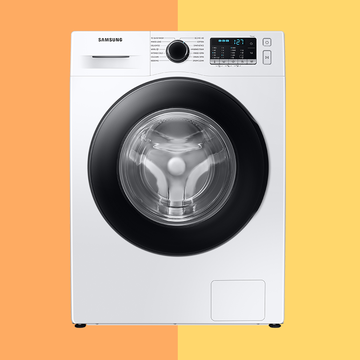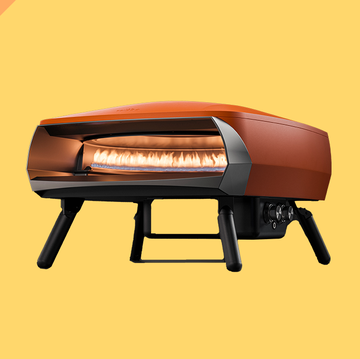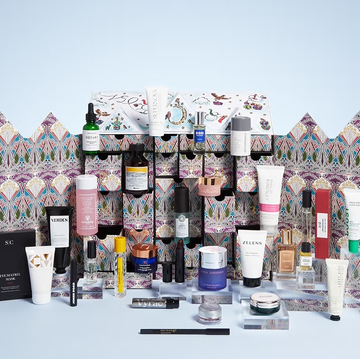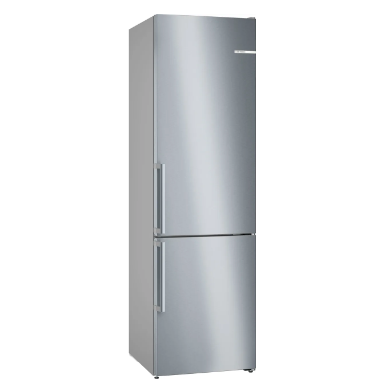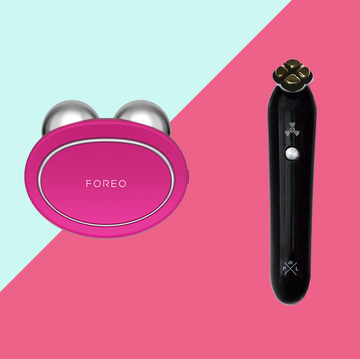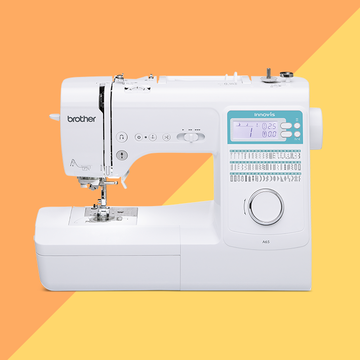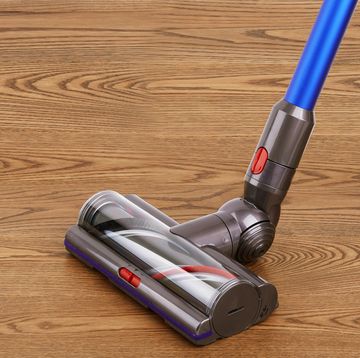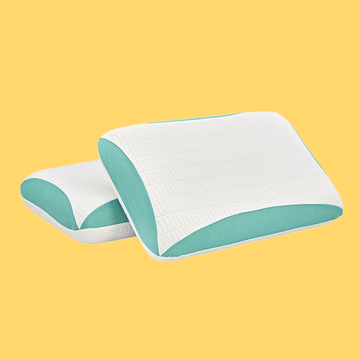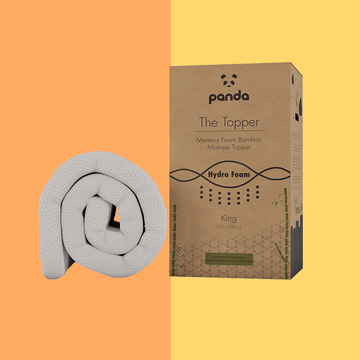Which type of fridge freezer should I buy?
There are three different types to consider: integrated, freestanding and American-style. Here’s what you need to know for each.
Integrated: These built-in fridge freezers are hidden behind a cupboard, so you can coordinate the finish with the rest of your kitchen. Most are designed to fit within a 60cm wide cupboard and tend to measure about 178cm high. They also tend to be more expensive than freestanding models.
Freestanding: These can sit anywhere in your kitchen and are ideal if you need to store food for a large family – some can reach over 200cm high. There are plenty to choose from and they’re cheaper than the other types of fridge freezer.
American-style: American-style fridges are double the width of typical fridge freezers, boasting full-length double doors and plenty of storage space. You’ll need a large kitchen to accommodate one of these, and they tend to be costly both to buy and run. However, they often come with useful extra features such as water filters and ice-cube makers. Check out our rankings of the best American fridge freezers for your home.
What is a smart fridge and do I need one?
Modern internet-connected fridge freezers have smart features that can detect the contents of your fridge and show you what’s there via a smartphone app.
This helps you monitor when food needs to be used by or when you need to restock. Some smart models also allow you to download recipes to make the most of what’s in your fridge.
If you have the budget, they make a great kitchen addition, but smart features aren’t essential.
What should I look for when buying a fridge freezer?
Settled on the right type for your kitchen? Here’s what to consider next.
Size
First, make sure your new fridge freezer will fit inside your allocated kitchen space. This is particularly key if you’re buying an integrated model. Note, you’ll also need to factor in extra space, as recommended by the manufacturer, so the appliance can operate properly.
Then you need to decide on the fridge-to-freezer split; most tend to be a 70/30 or 60/40 split, with a bigger fridge and smaller freezer. You can find 50/50 models though, should you wish for an equal division of fresh and frozen food.
Next is capacity or, in other words, the litres of food a fridge freezer is able to hold. The bigger the household, the more important a generous capacity will be. It's worth bearing in mind that capacity tends to be measured excluding any shelves.
Lastly, consider how many drawers there are, as well as compartments in the fridge door. Some shelves and storage features may be adjustable, which allows for greater flexibility, while other fridge freezers have extra features such as bottle racks.
Energy efficiency and running costs
Since new ratings for energy efficient appliances were introduced in 2021, they must be graded from A to G rather than up to A+++. Many had their ratings downgraded to account for better efficiencies across the board and allow room for new technological innovations. Models on our list range from A to F, which means they are still reliable when it comes to energy efficiency.
However, given the current cost of energy bills, opting for a fridge freezer with a high rating will mean lower running costs.
Frost-free tech
Gone are the days where you have to lay down newspaper and start the time-consuming process of defrosting your freezer. Many models now claim to be frost-free, which means there should be no more ice build up (taking up precious food space) and it helps the appliance run more efficiently.
Door design
Models with a reversible door hinge mean you can decide which side the fridge freezer opens from, based on what works best in your kitchen.
If you (or family members) often forget to shut the door properly, also look for a model with an alarm that will go off when the door is left open.
Fresh food preservation
Varying by model, many fridge freezers come with features designed to keep the food in your fridge fresher for longer, cutting down on food waste.
Some have flexible cooling zones and humidity controls that allow you to adjust the temperature of a drawer or area in the fridge to suit your shopping.
Others use light technology – such as the Beko HarvestFresh – to create the conditions for photosynthesis to continue, meaning your fruit and veg maintain their vitamins and nutrients.
You can find other additional features we recommend considering below, along with our brief installation guide.
What additional features should you look for?
There are a raft of features to choose between when investing in a fridge freezer. Here we break down what you need to know.
- Water dispenser – a nice-to-have that comes into its own during warm weather, water dispensers serve cool, filtered water. Some are plumbed in while others will need refilling manually.
- Childproof features – if you’ve got little ones foraging around, look for a model with temperature dials that can’t be easily knocked or that require unlocking to adjust the settings.
- Holiday mode – a must-have for regular jet-setters, this allows you to switch off the fridge while the freezer stays running.
- Digital displays: Along with indicator lights and audible signals, these allow you to monitor the temperature easily and will tell you if the door has been left open or if there’s a fault with the appliance.
- Separate controls: Setting the fridge and freezer controls independently helps them run better and keeps your food fresh, chilled or frozen at the right temperatures.
- Auto defrost: Defrosted water in the fridge section will drain into a trough at the back of the appliance and evaporate to stop your fridge from freezing up and becoming damp.
- Solid drawers in the freezer and glass shelves in the fridge: Freezer drawers can be expensive to replace so check they’re made of sturdy plastic to ensure a longer lifespan. For your fridge, glass shelves retain cold most effectively and are easier to pack and clean.
- Door alarms: This will alert you if you’ve left either door open, helping to avoid any unwelcome puddles of defrosted water or thawed food.
- Climate class: Look out for a "climate class" rating when buying a new freezer as this will tell you the range of temperatures the appliance can cope with and where it’s best to keep it. The “N (normal)” class is for a room with a temperature range of 16-32C. If the room drops below 16C at night or you’re planning to keep the freezer in a garage where temperatures can fall as low as 10C, then an “SN (sub-normal)” model may be more suitable.
- Fast freeze: This keeps the temperature low when you add large quantities of fresh food to the freezer, and it also means the food will be fresher when it’s defrosted. It also helps retain the texture and quality of certain foods, such as bread. Some models automatically revert to the normal setting once the food has frozen but others must be switched back manually.
- Cold accumulation block: Store this in the freezer so the appliance stays cold for longer if there’s a power failure.
- Pull-out drainage spout: Having one of these means water can be drained away more easily when you defrost the freezer.
What brands are good for fridge freezers?
We've tested 61 fridge freezers in our lab and there are some brands that always top our tests. For innovation, including AI integration that tells you what ingredients you're running low on to knock-to-view fridge doors and even mood lighting, Samsung and LG impressed. These are both American fridge freezers so head to our guide to read our expert reviews.
Beko and Hoover also proved reliable in testing and offer more affordable fridge freezers.
What do you need to know about installation?
After your new appliance is delivered, keep it upright. You should leave it to stand for a few hours before plugging it in too, as this allows the gases inside to settle.
Once you’ve switched it on, try to leave it overnight to give it time to reach the correct temperature before being packed with food.
Installing plumbed-in models can be trickier as the water hose must be securely fastened at the back. But the retailer should offer to come and install it for you (and in many cases, take your old one away too).
How long should your fridge freezer last?
Your fridge freezer should last you a good 10 years, but key to that is taking good care of it, cleaning it regularly and replacing any filters when needed.
Follow our guide to deep cleaning your fridge (which includes advice on how to stop any unpleasant smells) to keep it in top condition.
If you’re replacing an existing fridge freezer, there are plenty of places for you to safely recycle your old one. Find your nearest electrical recycling point, or read our guide on how to donate or dispose of your appliances and tech for extra guidance.


